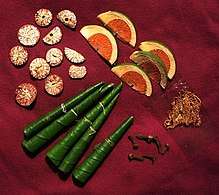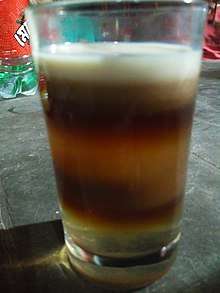Sylhetis
The Sylheti people (Bengali: সিলেটি, romanized: Sileti, lit. 'of Sylhet', Sylheti: ꠍꠤꠟꠐꠤ) are an Indo-Aryan ethnolinguistic group which originated from the Sylhet region of the Indian subcontinent, presently divided between the Sylhet Division of Bangladesh, three districts of the Barak Valley and in the Hojai district of Assam in India, and speak the Sylheti dialect.[4][5] There are sizeable populations in the Indian states of Meghalaya, Tripura in North Tripura district and Manipur. Established diaspora communities exist in the United Kingdom, the United States, the Middle East, Italy and other parts of the world. Sylhetis maintain a distinct identity separate from or in addition to having a Bengali identity, due to cultural, linguistic, geographical and historical reasons.[6][7]
| Total population | |
|---|---|
| c. ~9.8 million[1] | |
| Regions with significant populations | |
| Sylhet Division (Bangladesh) Barak Valley and Hojai district in Assam (India) Shillong (India) North Tripura district in Tripura (India) Greater London (United Kingdom) New York City (United States) West Midlands (United Kingdom) Greater Manchester (United Kingdom) Yorkshire and the Humber East Midlands | |
| Languages | |
| Sylheti and Bengali (minority) | |
| Religion | |
| Bangladesh: Islam (81%), Hinduism (18%)[2] India: Hinduism (50.1%), Islam (48.1%) [3] Minorities: | |
| Related ethnic groups | |
| Indo-Aryan peoples |
Diaspora
Lord Cornwallis introduced the Permanent Settlement Act of Bengal in 1793 and it altered the social, political and economic landscape of the Sylhet region; socioeconomic ramification for former landlords was severe as the land changed hands. On juxtapose, colonial administration opened new windows of opportunities for young men, who sought employment merchant ship companies. Young men from Sylhet boarded ships primarily at Kolkata, Mumbai and Singapore. Many Sylheti people believed that seafaring was a historical and cultural inheritance due to a large proportion of Sylheti Muslims being descended from foreign traders, lascars and businessman from the Middle East and Central Asia who migrated to the Sylhet region before and after the Conquest of Sylhet.[8] Khala Miah, who was a Sylheti migrant, claimed this was a very encouraging factor for Sylhetis to travel to Calcutta aiming to eventually reach the United States and United Kingdom.[9] By virtue of Magna Carta Libertatum, Sylhetis could enter and settle Britain freely (while a declaration of intent was required to enter the USA). Diaspora patterns indicate a strong connection between Sylheti diaspora and the movement of Sylheti seamen.[10]
The Sylheti diaspora population grew in response to a need for an economic sustenance during the British Raj, when many Sylheti men left the region in search of employment. During this period, young men from Sylhet often worked as lascars in the British merchant marine. Some abandoned their ships in London in search of economic opportunity, while others found alternative routes to enter the country. Chain migration led to the eventual settlement of large numbers of Sylhetis in working-class neighbourhoods in London's East End and other industrial towns and cities such as Luton, Birmingham, Manchester, Leeds, Bradford, and Oldham.[11]
Today, the Sylheti diaspora numbers around one million, mainly concentrated in the United Kingdom, United States, Canada, Germany, Italy, France, Australia, Portugal, Spain, Sweden, Finland and the Middle East and other European countries. However, a 2008 study showed that 95% of Sylheti diaspora live in the UK.[12] In the United States, most Sylhetis live in New York City, though sizeable populations also live in Atlanta, Houston, Los Angeles, Miami, and Detroit.
Some argue that remittances sent from Sylheti diaspora around the world back to Bangladesh have negatively affected development in Bangladesh, where a lack of government initiatives has caused economic inertia.[13]
According to neo-classical theory, the poorest would move to the richest countries and those from densely populated areas would move to more sparsely populated regions. This has clearly not been the case. The brain drain was a movement from core to core, purely on economic maximisation, while it was young Sylheti pioneers with access to financial resources that migrated from a severely overpopulated Bangladesh to the overcrowded streets of Spitalfields, poorest from all parts of Bangladesh migrated to Sylhet for a better life, causing a severe overcrowding and scarcity of resources in Sylhet.[14]
Language
The official languages recognised by the Bangladeshi and Assamese governments are Standard Bengali and Assamese respectively. These languages are used in education. Their most common spoken language is the Sylheti dialect. In madrasas across the Sylhet region, Arabic is taught as a second language. It is seen by Muslims as a religious language in which they can understand the theology of Islam, the Qur'an, Sunnah and Hadith. The Sylheti diaspora in the Middle East has further increased the number of Sylhetis who can speak Arabic. A majority of Sylheti Muslims have had some form of formal or informal education in the reading, writing and pronunciation of the Arabic language as part of their religious education. Arabic is used in many Muslim congregations such as the weekly Jumu'ah Salah in which a sermon (khutbah) is given in Arabic. Historically, after the Conquest of Sylhet when the region was incorporated into Muslim Bengal, the Arabic language was an official language used by the Delhi and Bengal Sultanates in addition to Persian; thus the upper-class would be educated in these two languages in addition to Sylheti.
Religion
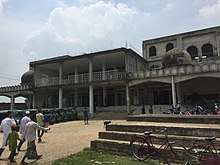
Islam is the largest religion practised by Sylhetis. Sunni Islam is the largest denomination with majority following the Hanafi school of law although some also follow the Shafi'i and Hanbali madhhabs.[15] There are significant numbers of people who follow Sufi ideals similar to the Barelvis, the most influential is the teachings of Abdul Latif of Fultoli, Zakiganj – a descendant of Shah Kamal Quhafa, the son of Burhanuddin Quhafa, one of the disciples of Shah Jalal.[16] The revivalist Deobandi movement is also popular amongst Sylhetis and many are part of the Tablighi Jamaat. Similarly, Haji Shariatullah's Faraizi movement was very popular in the Sylhet region during the British period and Wahhabism was adopted by some upper-class Sylheti families.[17]
There is a very small minority of Shia Muslims who gather every year during Ashura for the Mourning of Muharram processions. Places of procession include the Prithimpasha Nawab Bari in Kulaura, home to a Shia family, as well as Balaganj, Osmani Nagar and Rajtila.
Hinduism is the second largest religion amongst Sylhetis. Other minority religions include Christianity and there was a presence of Sikhism after Guru Nanak's visit to Sylhet in 1508 to spread the religion and build a gurdwara there. This Gurdwara was visited twice by Tegh Bahadur and many hukamnamas were issued to this temple in Sylhet by Guru Gobind Singh. In 1897, the gurdwara fell down after the earthquake.[18]
Caste and class
.jpg)
Sylheti Hindus are socially stratified into four castes, called soturbonno. The caste system derived from Hindu system of bonno (type, order, colour or class) and zat (clan, tribe, community or sub-community), which divides people into four colours: White, Red, Yellow and Black. White people are Brahmon, who are destined to be priests, teachers and preachers; Red people are Khotriyo, who are destined to be kings, governors, warriors and soldiers; Yellow people are Besho, who are born to be cattle herders, ploughmen, artisans and merchants; and Black people are Shudro, who are born to be labourers and servants to the people of twice-born caste.[19][20] People from all caste denominations exist among Sylheti Hindus.
Although Islam does not recognise any castes, Sylheti Muslims have applied a system of social stratification known as "bongsho".[21] Class system among Muslims evolved during the halcyon days of the Mughal Empire. The upper caste are divided into four groups claiming descent from; Syeds (Prophet Muhammad), Mughals, Pathans and Shaikhs (Middle Easterns and those that spread Islam). Other castes include Mahimal. The latter two formed the majority of Sylheti Muslims in the early 20th century.[22]
Culture
The unique culture and dialectic differences of Sylheti people developed in part because of its long history of being separate from the rest of Bengal during the British and pre-Islamic period as well as the high influx of Middle Eastern and Central Asian settlers after the arrival of Shah Jalal in 1303.
Cuisine
Sylheti cuisine is similar to other regional Bangladeshi cuisines as well as the Assamese cuisine. However, it also has dishes unique to Sylhetis. A Sylheti meal consists of many things such as bhat (rice) with mas (fish curry), gus/gusto (meat curry), dail, anaz (greens and herbs), and shobzi (vegetables).
Sylhetis boast a variation of the famous pilaf dish – Akhni – in which the rice is cooked after and the chicken pieces are cut. Commonly consumed varieties of meat include beef, chicken, Mutton and duck/goose in dishes such as duck bamboo curry. They also proudly hold the heritage of Beef Hatkora, a rice dish consisting of a wild citrus fruit native to the Sylhet region and not found in other parts of Bengal.[23] The cuisine of Sylhetis is famed for hutki, meaning dried fish which can be used in turn to make dishes such as hutki shira. There are two variations of hutki; one kind is sun-dried while the other is buried under wet soil.[24] Hatkora (wild citruses) are used at times to flavour curries. Popular fish curries include gual, rou, ilish, or fabia. A main characteristic of a Sylheti meal is tenga (Preparations bearing a characteristically rich and tangy flavour). The food is often served in plates which have a distinct flowery pattern often in blue or pink. Common beverages include shorbot, falooda, Rooh Afza, traditional fruit juices as well as basil seed or tukma-based drinks.
During the British period, biscuits and loaves were introduced in the region and received popularity within the Muslim community. The middle-class Hindus of Cachar and Sylhet were very suspicious of biscuits and breads as they believed they were baked by Muslims. In one occasion, a few Hindus in Cachar caught some Englishman eating biscuits with tea which caused an uproar. The information reached the Hindus of Sylhet and a little rebellion occurred. In response to this, companies started to advertise their bread as "machine-made" and "untouched by (Muslim) hand" to tell Hindus that the breads were "safe for consumption". This incident is mentioned in Bipin Chandra Pal's autobiography and he mentions how gradually culinary habits of Hindus eventually changed.[24]
Literature and poetry
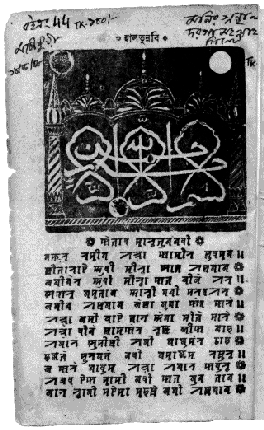
Sylheti poets were writing in the Bengali language by the 16th century. The Hattanather Panchali (Hattanath chronicles) collected by Manohar Sen of Dulali, Bipranath Sen and Jaikrishna Dutta are Bengali ballads which detail the history of Sylhet.[25] When Sylhet was under the rule of the Twipra Kingdom, medieval Sylheti writers using the Bengali script included the likes of Dwija Pashupati, the author of Chandravali – considered one of the earliest Sylheti works.[26] Nasir ad-Din Haydar of Sylhet town wrote the Tawarikh-e-Jalali, the first Bengali biography of Shah Jalal. Nur Ali Khan of Syedpur wrote Marifoti Geet and Muzaffar Khan of Ita was a poet. Muslim literature was based upon historical affairs and biographies of prominent Islamic figures. Like the rest of Muslim Bengal, Bengali Muslim poetry was written in a colloquial dialect of Bengali which came to be known as Dobhashi, and has had a major influence on the current Sylheti dialect. Dobhashi featured the use of Perso-Arabic vocabulary in Bengali texts. A separate script was developed in Sylhet for this popular linguistic register. Known as the Sylheti Nagri script, it's most renowned writer was Sadeq Ali whose Halatunnabi was famed as household item amongst rural Muslim communities.[25][27] Manuscripts have been found of works such as Rag Namah by Fazil Nasim Muhammad, Shonabhaner Puthi by Abdul Karim, and the earliest known work Talib Huson (1549) by Gholam Huson.[28] Late Nagri writers include Muhammad Haidar Chaudhuri who wrote Ahwal-i-Zamana in 1907 and Muhammad Abdul Latif who wrote Pohela Kitab o Doikhurar Rag in 1930.[29]
Sylhet, in particular the Taraf Kingdom, was also an esteemed centre for the study of Persian, an official language up until the British period, due to the high population of foreign missionaries from Central Asia and Persia following the Conquest of Sylhet. Ma'dan al-Fawaid was written in 1534 by Syed Shah Israil who is considered to be Sylhet's first author.[30] Other prominent writers include Muhammad Arshad, Syed Rayhan ad-Din and Syed Pir Badshah.[31][32] Reyazuddin of Taraf wrote a Persian book on "Dream Fruit".[33]Ala Bakhsh Mazumdar Hamed was known to have written Tuhfatul Muhsineen and Diwan-i-Hamed. Collectively, the works of these two people belonging to the Mazumdar family of Sylhet, are regarded amongst the most creative literary works in the Sylhet region. Majid Bakht Mazumdar wrote an English book on the family history.[34]
In the 19th century, Urdu had a somewhat aristocratic background in Sylhet and notable families that spoke it included the Nawabs of Longla and the Mazumdars of Sylhet. Moulvi Hamid Bakht Mazumdar, who was also fluent in Persian, wrote the Urdu prose Ain-i-Hind, a history of the Indian subcontinent.[25] Literature written in this period included Nazir Muhammad Abdullah Ashufta's Tanbeeh al-Ghafileen, written in 1894, and the poems of Moulvi Farzam Ali Bekhud of Baniachong. Hakim Ashraf Ali Mast and Fida Sylheti were prominent Urdu poets of Sylhet in the 19th century, the latter being a disciple of Agha Ahmad Ali Isfahani.[35] In 1946, the Anjuman-i Taraqqi-i Urdu performed a mushaira in Sylhet attracting the likes of Hafeez Jalandhari, the lyricist of the National Anthem of Pakistan.[36]
Popular modern writers and poets from the region include Abdur Rouf Choudhury and Chowdhury Gulam Akbar. Muhammad Mojlum Khan is a non-fiction writer best known for writing the English biographical dictionary, The Muslim 100. Prominent Bengali language non-fiction writers include Syed Murtaza Ali, Syed Mujtaba Ali and Dwijen Sharma.
Fashion and attire
Sylheti attire is shares similarities with Bengali and North Indian attire. In rural areas, older women wear the shari while the younger generation wear the selwar kamiz, both with simple designs. In urban areas, the selwar kamiz is more popular, and has distinct fashionable designs. Men also wear traditional costumes such as the fanjabi with selwar or pyjama.[37] The popularity of the fotua, a shorter upper garment, is also replacing the fanjabi in casual environments reducing the latter to be worn in more formal occasions. The longi and gamsa, is a common combination for men living in rural areas. Islamic clothing is also very common in the region. During special occasions, women commonly wear either modest sharis, selwar kamizes or abayas, covering their hair with hijab or unna; and men wear a fanjabi, also covering their hair with a tupi, toqi, pagri or rumal.
Sports and games
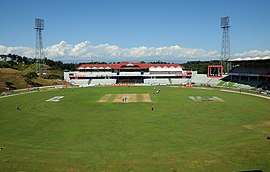
Cricket and football are the most popular sports amongst Sylhetis. Many Sylheti cricketers have played for the Bangladesh national cricket team such as Alok Kapali, Enamul Haque Jr, Nazmul Hossain, Rajin Saleh and Tapash Baisya. The football club Beanibazar SC has played in the Bangladesh League and Alfaz Ahmed was a Sylheti who played for the Bangladesh national football team. Hamza Choudhury is the first Bangladeshi to play in the Premier League and is predicted to be the first British Asian to play for the England national football team.[38]
Bulbul Hussain was the first Sylheti professional wheelchair rugby player. Sylhetis are very competitive when it comes to board and home games such as Fochishi and its modern counterpart Ludo, as well as Carrom Board, Sur-Fulish, Khanamasi and Chess. Rani Hamid is one of the most successful chess players in the world, winning championships in Asia and Europe multiple times. Ramnath Biswas was a revolutionary soldier who embarked on three world tours on a bicycle in the 19th century. Nowka Bais is a common traditional rowing competition during the monsoon season when rivers are filled up, and much of the land is under water. Fighting sports include Kabaddi, Latim and Lathi khela.
Folklore
Sylheti folklore is influenced by Hindu, Sufi, Turco-Persian and native ideas. It has some unique elements, differentiating it from mainstream Bengali folklore. Common folkloric beings include bhoots, foris, jinns, mermaids and personified animals. Stories may also include the presence of pirs and fakirs. Folk stories are traditionally common in villages during an eshi mojlis (idle sitting). Chandra Kumar De of Mymensingh is known to be the first researcher of Sylheti folklore.[39] Archives of old works are kept in Kendriya Muslim Sahitya Sangsad in Sylhet (also known as the Sylhet Central Muslim Literary Society) – the oldest literary organisation in Bengal and one of the oldest in the subcontinent.
Marriage
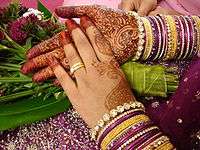
Sylheti weddings are celebrated with a combination of general Bengali and Muslim traditions with unique Sylheti features as well. They play a large part in developing and maintaining social ties between families and villages. Marriages are mostly between either the British Bangladeshi diaspora (known as Londoni) or the native-born Sylhetis. The first event is known as paan-chini (paan-sugar), or chini-paan, hosted by the bride's family.[40] Gifts are received from the groom's family and the marriage date is fixed in this event. An adda takes place between the families as they consume paan and mishti (sweets). The next event is the mehndi (henna) ceremony also known as the gaye holud (turmeric on the body) and gifts include a pair of fish dressed up as a couple. This is normally followed by the main event, the biya-shadi or walima hosting thousands of guests. An akd takes place, where an Islamic contract of marriage is signed. A qadi or imam is usually present here and would also recite the Quran and make dua for the couple. Post-marriage ceremonies include the phirajatra or phirakhaowa (return of the bride to her house), serving payesh and milk, as well as the bou-bhat and fish-cutting ceremony which takes place in the groom's home.[41] Dhamail is a part of Sylheti marraige.[42]
Festivals
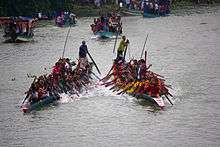
Islamic holidays are celebrated by the community each year, which includes Eid al-Adha and Eid ul-Fitr. People are dressed in their new traditional clothing.[43] Children are given money and eidi (gift) by elders, and Eid prayers are attended in an open eidgah by men in the morning in large numbers. They will then visit their relatives later in the day. Traditional food will be cooked for relatives, such as samosa and handesh. The celebration of Eid reunites relatives and improves relations.[44] The Eid al-Adha is celebrated after Hajj, to commemorate the prophet Ibrahim's compliance to sacrifice his son Isma'il.[45][46] An animal has to be sacrificed, and then distributed between families and neighbours as zakat.
Significant cultural events or celebrations are also celebrated by the community annually. Foyla Boishakh is a celebration of the new year and arrival of summer in the Bengali calendar and is celebrated in April. It features a funfair, music and dance displays on stages, with people dressed in colourful traditional clothes, parading through the streets.[47]
The Nouka Bais is a traditional boat racing competition which takes place during and after the rainy season when much of the land goes under water. The long canoes were referred to as khel naos (meaning playing boats) and the use of cymbals to accompany the singing was common.[48] Different types of boats are used in different parts of Bengal and Sylhetis are known for their use of sarangi boats.[49]
Notables
See also
References
- "Sylheti". Ethnologue. Retrieved 2 March 2020.
- "Sylhet Division". Banglapedia. Retrieved 2 March 2020.
- http://censusindia.gov.in/2011census/dchb/1817_PART_B_DCHB_CACHAR.pdf
- Sebastian M. Rasinger (2007). Bengali-English in East London: A Study in Urban Multilingualism. pp. 26–27. Retrieved on 2 May 2017.
- Glanville Price (2000). Encyclopedia of the Languages of Europe. pp. 91–92.
- Tanweer Fazal (2012). Minority Nationalisms in South Asia: 'We are with culture but without geography': locating Sylheti identity in contemporary India, Nabanipa Bhattacharjee.' pp.59–67.
- A community without aspirations Zia Haider Rahman. 2 May 2007. Retrieved on 2018-03-07.
- Fidler, Ceri-Anne (2011). Lascars, c.1850 – 1950: The Lives and Identities of Indian Seafarers in Imperial Britain and India (Thesis). Cardiff University. p. 123.
- Choudhury, Yousuf (1995). Sons of the Empire: Oral History from the Bangladeshi Seamen who Served on British Ships During the 1939–45 War.
- Across Seven Seas and Thirteen Rivers: Life Stories of Pioneer Sylheti Settlers in Britain, Caroline Adams, Tassaduq Ahmed and Dan Jones, THAP (1987), London, ISBN 978-0906698143
- Claire Alexander, Joya Chaterji and Annu Jalais, The Bengal Diaspora: Rethinking Muslim Migration, p.2, Routledge (2015) London.
- Benjamin Zeitlyn (September 2008). "Challenging Language in the Diaspora" (PDF). Bangla Journal. 6 (14): 126–140. Retrieved 13 August 2015.
- Yong, T.T.; Rahman, M.M. (2013). Diaspora Engagement and Development in South Asia. Palgrave Macmillan. p. 108. ISBN 9781137334459. Retrieved 13 August 2015.
- Anne J. Kershen (2005). Strangers, Aliens and Asians: Huguenots, Jews and Bangladeshis in Spitalfields, 1660–2000. Routledge. p. 19. ISBN 978-0-7146-5525-3.
- "Islam in Bangladesh". OurBangla. Archived from the original on 19 February 2007. Retrieved 3 August 2016.
- Dr David Garbin (17 June 2005). "Bangladeshi Diaspora in the UK : Some observations on socio-culturaldynamics, religious trends and transnational politics" (PDF). University of Surrey. Archived from the original (PDF) on 23 September 2010. Retrieved 3 June 2008.
- Hunter, William Wilson (1875). "District of Sylhet: Administrative History". A Statistical Account of Assam. 2.
- "Gurdwaras in Bangladesh". Sikhi Wiki.
- Mahabharata (12.181)
- Hiltebeitel, Alf (2011). Dharma : its early history in law, religion, and narrative. Oxford University Press. pp. 529–531.ISBN 978-0-19-539423-8
- Gilbert, Paul Robert (September 2015). "Re-branding Bangladesh: The Other Asian Tiger". Money mines: an ethnography of frontiers, capital and extractive industries in London and Bangladesh (Thesis). University of Sussex. p. 218.
- Assam District Gazetteers – Supplement. 2. Shillong. 1915. p. 46.
- Nevins, Debbie; Mariam, Whyte (15 July 2018). Bangladesh. Cavendish Square Publishing, LLC. p. 126.
- Ray, Utsa (5 January 2015). Culinary Culture in Colonial India. Cambridge University Press.
- Choudhury, Achyut Charan (2000) [1916]. Srihatter Itibritta: Uttorangsho (in Bengali). Kolkata: Kotha.
- Bhowmik, Kalpana. "Dwija Pashupati". Banglapedia: National Encyclopedia of Bangladesh. Asiatic Society of Bangladesh.
- Sadiq, Mohammad (2008). Sileṭi nāgarī : phakiri dhārāra phasala সিলেটি নাগরী: ফকিরি ধারার ফসল. Asiatic Society of Bangladesh. OCLC 495614347.
- Muhammad Ashraful Islam. "Sylheti Nagri". Banglapedia: National Encyclopedia of Bangladesh. Asiatic Society of Bangladesh.
- Roy, Asim (1983). The Islamic Syncretistic Tradition in Bengal.
- Maulana Abdullah ibn Saeed Jalalabadi (May 2010). "জীবন-গাঙের বাঁকে বাঁকে-(২)" [Curling through the River of Life (2)] (in Bengali). Al Kawsar. Retrieved 1 May 2019.
- A K M Jamal Uddin. Cultural similarities between Iran and the Indian Subcontinent.
- Abu Musa Mohammad Arif Billah. "Persian". Banglapedia: National Encyclopedia of Bangladesh. Asiatic Society of Bangladesh.
- স্বপ্ন ফল বিষয়ক গ্রন্থ
- Islam, Sirajul (1992). History of Bangladesh, 1704–1971. Asiatic Society of Bangladesh.
- Dr Kaniz-e-Butool. "Urdu". Banglapedia: National Encyclopedia of Bangladesh. Asiatic Society of Bangladesh.
- Atful Hye Shibly (2011). Abdul Matin Chaudhury (1895–1948): Trusted Lieutenant of Mohammad Ali Jinnah. p. 125.
- E M Lewis (1868). "Sylhet District". Principal Heads of the History and Statistics of the Dacca Division. Calcutta: Calcutta Central Press Company. pp. 281–326.
- Trehan, Dev (2 September 2019). "Hamza Choudhury can be first British South Asian to play for England, says Michael Chopra". Sky Sports.
- Ahmed, Sofe (August 2014). "Research on Folklore in Sylhet Region of Bangladesh: A Study of Chowdhury Harun Akbor". International Journal on Studies in English Language and Literature. 2 (8): 131–134.
- "সিলেটি বিয়ে". Kaler Kantho (in Bengali). 7 June 2020. Retrieved 19 April 2020.
- "Marriage rituals in Sylhet- Muslim and Hindu styles". Bdnews24.com. 15 June 2005.
- "সিলেটী বিয়ের গান ও ধামাইল নাচগান". Prothom Alo (in Bengali). 13 March 2020.
- Sarah C., White (1992). Arguing with the Crocodile: Gender and Class in Bangladesh. p. 30. ISBN 978-1-85649-085-6.
- Gilbert, Pamela K (2002). Imagined Londons. p. 170. ISBN 0-7914-5502-5.
- "What is Eid-al-Adha". The Telegraph. London. 24 September 2015.
- "Eid Al-Adha" (PDF). TeacherNet (Department for Children, Schools and Families – Crown). Archived from the original (PDF) on 5 March 2009. Retrieved 17 February 2009.
- "Banglatown spices it up for the new year". The Londoner. Archived from the original on 1 May 2006. Retrieved 25 July 2008.
- B C Allen (1905). "3. The People: Amusements". Assam District Gazetteers. 2. Calcutta: Government of Assam. p. 111.
- S M Mahfuzur Rahman (2012). "Boat Race". In Islam, Sirajul; Miah, Sajahan; Khanam, Mahfuza; Ahmed, Sabbir (eds.). Banglapedia: the National Encyclopedia of Bangladesh (Online ed.). Dhaka, Bangladesh: Banglapedia Trust, Asiatic Society of Bangladesh. ISBN 984-32-0576-6. OCLC 52727562. Retrieved 20 June 2020.
